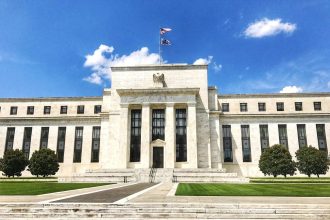MicroStockHub/Getty Images
A liquid savings account can provide easy access to your money for emergencies or other short-term financial goals — and a high-yield savings account can give you the added benefit of a rate that’s up to nine times the national average. Such a yield can translate to hundreds more in interest per year for some balances.
In addition to choosing a high-yield savings account based on its competitive annual percentage yield (APY), you’ll want to prioritize offerings such as federal deposit insurance and convenience — while avoiding monthly fees that can eat away at your balance.
How to choose best high-yield savings account
There are various important factors to consider when shopping around for the right high-yield savings account, and these include interest, safety, accessing your money and avoiding fees:
APY
Expressed as a percentage, APY refers to how much interest a bank account earns in one year. It incorporates the effect of compound interest, which means you’re earning interest on both your principal and any interest that’s already been earned.
When choosing the best high-yield savings account, APY should be a top priority — and you’ll currently be able to find APYs of up to 5.35 percent. The best place to find a competitive APY is often at an online-only bank. These tend to offer such rates to draw customers away from big brick-and-mortar banks, which are known for paying rock-bottom yields.
APYs on high-yield savings accounts have climbed in recent years, and these rates are now outpacing inflation, which is currently at an annual rate of 3.5 percent. This is a boon for savers because when your money doesn’t keep up with inflation, its loses purchasing power.
FDIC insurance
Going with a federally-insured bank or credit union is a must when you’re choosing a savings account, money market account, checking account or certificate of deposit (CD). This ensures you won’t lose your money should the financial institution end up failing and closing its doors.
Your deposits are protected when the account is with a bank insured by the Federal Deposit Insurance Corp. (FDIC) or a credit union insured by the National Credit Union Administration (NCUA). Accounts are insured for up to $250,000 per depositor, per insured bank or credit union, for each account ownership category.
Convenience
When looking for a high-yield savings account, consider the ease with which you can access your account and perform transactions. In addition to commonly offering the highest APYs, online-only banks often come with robust banking apps and websites that make it simple to:
- Transfer money between accounts
- Set up automatic transfers from checking to savings accounts
- Deposit checks remotely
- Set up separate categories or buckets for different savings goals
- Pay friends and family through platforms such as Zelle
- Access customer service through a live-chat feature
When considering a bank, check how well its app is rated on Google Play or the App Store. You’ll be able to access user reviews as well as screen shots of what the app looks like, once installed.
Like online banks, many large brick-and-mortar banks offer a convenient digital banking experience. However, these banks tend to pay significantly lower APYs than those offered from online banks. If you prefer a brick-and-mortar bank for access to in-person banking, consider getting the best of both worlds by keeping separate savings accounts at a high-yielding online bank and a bank that offers branches.
Avoiding fees
The benefits of earning a highly competitive APY can be lessened when there’s a monthly service fee eating into your savings account balance. Read the fine print in advance and choose a savings account that doesn’t charge maintenance fees — or one that makes these fees easy to avoid when you maintain a set minimum balance or receive direct deposits.
While you’re reading the fine print, look for any minimum opening deposit requirement. While some savings accounts don’t require any minimum deposit, others may require an amount of $50, $100 or more. If an account requires an amount you’re not comfortable with, cross it off your list and continue looking elsewhere.
Bottom line
The best high-yield savings accounts not only earn yields that are well above the national average, but they also should provide easy digital access to your transactions as well as federal deposit insurance for your funds. It’s also important to find a savings account that won’t charge monthly fees and that doesn’t have a minimum opening balance requirement that’s higher than you’re comfortable with. By shopping around, it’s not difficult to find an account that meets all of these requirements.
Read the full article here
















